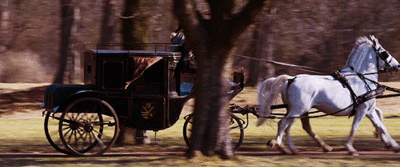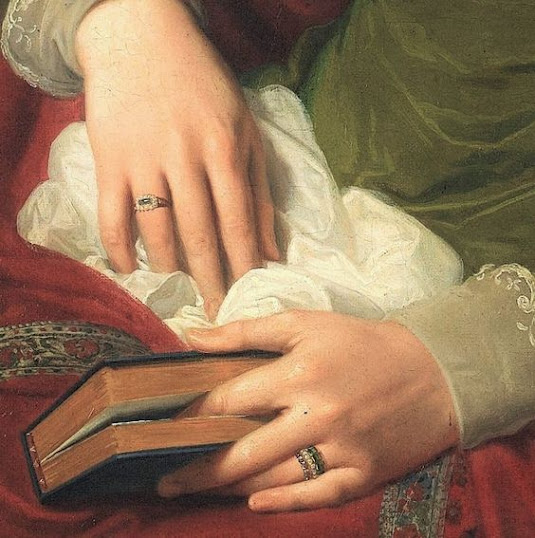Welcome to all of you inside my little corner where enjoying gardening, home, poetry, leisure, painting and history for a romantic encounter with the past that makes us dream.
venerdì 30 aprile 2021
...DAYS OF A TENDER SHOUT OF SUN ...HOARSE OF A THOUSAND WORDS...
martedì 20 aprile 2021
Agatha Christie's disappearance in 1926.
a presto 💕
a presto 💕
domenica 11 aprile 2021
The True Story Behind the West Toughest Trousers - La vera storia dei 'jeans'.
Its sturdy vessels and the galleons that incessantly plowed the seas to reach the lands in which to find spices, silk and other precious, had to be equipped with very resistant sails as well as the fabrics with which the purchased goods were covered had to be thick and solid.
- image 1 on the left - The Serenissima Republic of Genoa in the XVth century
The shipyards and the Genoese merchants used a type of cross-woven cotton, cheap, rough and resistant both to make the sails and to protect their goods. This type of fabric was produced in the French city of Nimes, hence the name "denim", and was woven in combination with moleskin. In Genoa, similar fabrics were dyed blue derived from the indigo exchanged with India. Their use was also extended to the manufacture of work clothes and sailors' uniforms and were exported under the French name of "bleu de Gênes", blue of Genoa. Particularly appreciated in northern Europe also during the following centuries, it reached the New Continent in the XIXth century thanks to an enterprising Bavarian merchant, Herr Levi Strauss: he departed from Europe with his stock of cotton canvas worked in simple trousers, without loops for belt and no back pockets. Having become the owner of a drugstore in San Francisco in 1853, he began trading these trousers that resisted rubbing against rocks, against the bark of trees, fighting against wooden supports and riding mules and horses, even bareback, for long journeys; they were cheap and comfortable and were soon provided with numerous sturdy pockets as required by gold seekers. In the 1860s, Levi Strauss's blue trousers were daily worn by miners, farmers and ranchers across the whole West.
- image 2 on the right - The Levi Strauss trade mark
In 1873 he bought the patent application for $ 69, which was requested after a Russian tailor immigrated to Reno gave him the idea of riveting the most strained seams to make miner's trousers more resistant. They were nicknamed 'blue jeans', taking their name from the French "bleu de Gênes".
LINKING WITH:
At KATHERINE'S CORNER and at BEV'S ECLECTIC RED BARN
venerdì 2 aprile 2021
The Art of Reading in the Victorian Age.
The 18th-century view that reading contemporary novels was a time-wasting
That’s why the during the XIXth century the most widely read novel in England
But if novels could influence for the good, they were thought to be also able to
Le ladies vittoriane erano lettrici davvero appassionate. L'aumento del tasso di
alfabetizzazione promosso dall’obbligo scolastico, la produzione più economica e
la più ampia disponibilità di libri nelle biblioteche promossero la lettura, così
come, intorno alla metà del XIX° secolo, l'illuminazione a gas ed elettrica
resero agibile anche leggere dopo il tramonto o prima di dormire la notte, cosa
che prima era possibile solo al lume di una candela o di una lampada ad olio
dalla luce debole e confusa.
2 - Edward John Pointer (Parigi, 1836-Londra, 1919), AN EVENING AT HOME
I romanzi erano spesso pubblicati in fascicoli mensili, il che li rendeva più
economici, più facilmente accessibili e condivisibili. La parte che veniva
pubblicata spesso finiva con un "cliff-hanger", una sorta di richiamo che serviva
per mantenere viva la memoria del lettore e anticipare la prossima puntata.
3 - Maria R.Dixon (Americana, 1823-1896) WOMAN IN BONNET READING A BOOK
4 - Thomas Benjamin Kennington (Britannico, 1856-1916) TITLE UNKNOWN
5 - William Kay Blacklock (Britannico, 1872-1924 QUIET READ
6 - Peter Philipp Rumpf (Tedesco, 1821-1896) YOUNG WOMAN READING IN THE PARK
Per le ladies appartenenti alle classi più abbienti che potevano permettersi le
edizioni appena pubblicate, leggere dalla propria collezione era una quasi
un’esigenza quotidiana. Sei mesi dopo la pubblicazione originale, i libri
vedevano il loro prezzo scendere, dato che anche quelli che erano stati
pubblicati in fascicoli venivano venduti in volumi singoli.
7- Alfred Emile Léopold Joseph Victor Stevens (Bruxelles, 1823-Paris, 1906) THE READER
8 - Charles Baugniet (Belga, 1814-1886) THE READER
9 - Auguste Toulmouche (Francese, 1829-1890) SWEET DOING NOTHING
10 - Auguste Toulmouche (Francese, 1829-1890) IN THE LIBRARY
E l'incremento delle reti ferroviarie contribuì a rendere i libri più economici
anche nelle stazioni. C'era sempre qualcosa di nuovo da leggere durante un
lungo viaggio.
11 - Augustus Leopold Egg (Londra, 1816-Algeri, 1863) THE TRAVELLING COMPANIONS
Era opinione diffusa che la narrativa potesse influenzare la mentalità dei lettori.
Mentre nel XVIII° secolo si credeva che la lettura di romanzi contemporanei
fosse un'attività di svago che riempiva il tempo e distraeva dall'ozio, durante
il periodo vittoriano si fece largo l'idea che essi avessero un valore educativo.
I vittoriani credevano che, sebbene i romanzi mancassero della serietà
culturale dei testi classici, inducessero comunque consapevolezza dei periodi
storici e fossero in grado di sviluppare valori morali cristiani.
12 - George Goodwin Kilburne (Londra, 1839-1924) A YOUNG LADY READING IN AN
INTERIOR
Ecco perché durante il XIX° secolo il romanzo più letto in Inghilterra fu The
Uncle Tom's Cabin - La capanna dello zio Tom (1852) della scrittrice americana
Harriet Beecher Stowe, che diffondeva ideali contro la schiavitù.
Ma se i romanzi potevano esercitare un’influenza positiva sul lettore, si pensava
che fossero anche in grado di influenzarlo negativamente, specialmente se si
trattava di ragazze o di persone prive di cultura appartenenti alle classi
lavoratrici, che potevano essere incoraggiate a emulare la vita dei criminali
immaginari le cui vicende venivano in essi raccontate.
13 - Alexander Mark Rossi (British, 1840-1916) FORBIDDEN BOOKS
Forse fu proprio questo il motivo che spinse Charles Dickens a scrivere romanzi
didattici: le sue storie ritraevano le classi socialmente più basse e avevano
sempre una morale che, implicitamente, diventava un esempio da seguire per
ogni lettore. La regina Vittoria era la sua lettrice più entusiasta, dato che ha
sempre voluto essere la prima a leggere l'ultimo romanzo che questi scriveva
prima che fosse pubblicato, non con uno scopo puritano o per controllarlo, ma
perché, con i loro valori, i suoi libri erano la vera espressione dell'era di cui Ella
era l'emblema.
FOTOGRAFIA: la PRINCIPESSA BEATRICE legge con la madre, la REGINA VICTORIA
Dickens ebbe l'intelligenza e la capacità di diventare parte integrante di quel
mondo che ancora si stava facendo, sia da un punto di vista intellettuale che
da un punto di vista morale, e probabilmente, il fatto di trovare 'tradotto' in
parole quello che divenne per Lei il significato di un'epoca, animava il Suo
divertimento, il Suo fervore ed il Suo diletto.
Dovremmo dire che Charles Dickens fu il vero scrittore vittoriano.
Spero di tutto cuore che abbiate apprezzato anche questo piccolo 'viaggio'
nell'era che tutti noi amiamo e,
con la più sincera gratitudine,
invio tutto il mio affetto a ciascuno di voi
A presto e Felice Pasqua💕
Linking with:
Thank you Angie at God's Growing Garden for featuring this post ❤













































